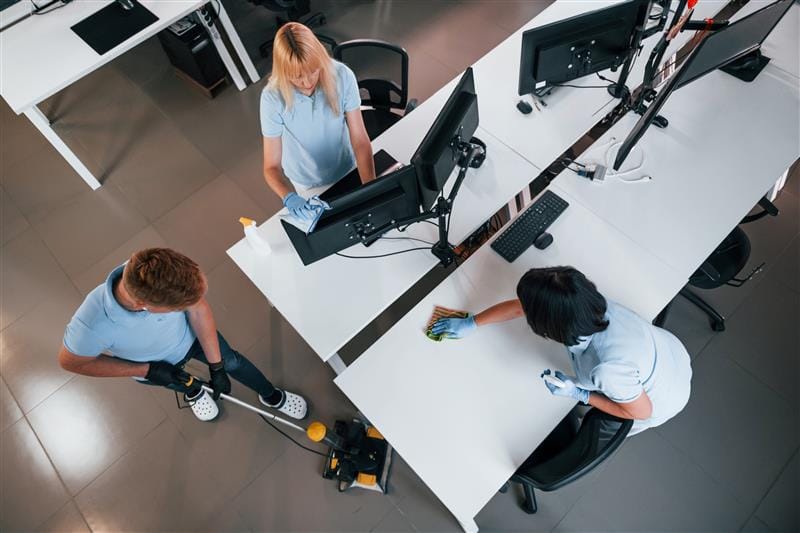The workplace still has a place in today’s business environment. Despite the growing popularity of remote and hybrid working styles, most companies are still maintaining their office spaces and encouraging employees.The Office of National Statistics (ONS) reports that more than a quarter of workers in Great Britain (28%) were considered hybrid workers between the period of 8th of January to 30th March 2025.
An additional report produced by Statista on UK remote and Hybrid working revealed that in August 2025, roughly 14% of workers in Great Britain, predominantly worked from home and approximately 22% are hybrid workers with occasional commute to the office. Onsite or fully-office based work comprise about 41% of the total workforce in the UK. The report reveals that the height of exclusively onsite workers or employees that were only travelling to work peaked in March 2022 at about 60% of the respondents sampled. While the highest percentage of remote workers was recorded in June 2020. There is a growing popularity of Hybrid working as the highest percentage of workers considered to be in this category was over 31% in November 2023.
The data from both ONS and Statista clearly indicates that more than a quarter of the UK workforce (28% and 22% respectively) are hybrid workers and around more than a third (41%) travel to work. This influences how often the workplace such as offices, warehouses, building sites and other spaces needs to be cleaned. Let’s explore the different scenarios that determine the frequency of clean required based on the different working modes.
Some factors that influence the frequency of cleaning in both a hybrid and onsite work pattern
There are several factors that will determine how often a work place is expected to be cleaned when a company has a hybrid working pattern. Or, certain questions that needs to be factored in like;
- How many days a week are workers expected to travel to the workplace and attend their duties?
- What is the average or expected foot traffic in the work environment? Do customers, clients or vendors regularly visit the workplace? If they do, that could add more to the overall foot traffic,
- What is the total office space and average space per scheduled employee? According to the Health and Safety Executive (HSE), the work environment should provide a space of about 11 cubic metres per person or worker. This the minimum requirement and a larger space will be expected if much of the work environment is taken up by furniture. The 11 cubic metres rule does not apply to spaces such as retail sales kiosks, machine control cabs, attendants’ shelters, meeting and lecture rooms.
- What is the nature of work carried out in the workplace? A work environment like food processing plants, restaurants and healthcare facilities with high safety and hygiene requirements will require a regular or daily clean due to the high activity nature of the environment. In some cases, commercial cleaning multiple times a day may be essential to maintaining the hygiene standard of surfaces and prevent lingering food mess. On the other hand, a low-activity environment like offices with administrative departments and call centers may only require a daily basic clean and a thorough clean multiple times a week.
The percentages or proportions of workers in different work modes will fluctuate continuously, and the requirements for commercial cleaning will be influenced by the factors mentioned above.










